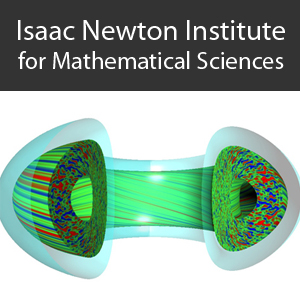Long-wavelength turbulence characteristics, dynamics and flows in tokamak plasmas
48 mins 6 secs,
665.31 MB,
MPEG-4 Video
480x360,
25.0 fps,
44100 Hz,
1.84 Mbits/sec
Share this media item:
Embed this media item:
Embed this media item:
About this item

| Description: |
McKee, G (University of Wisconsin-Madison)
Monday 19 July 2010, 14:30-15:00 |
|---|
| Created: | 2010-07-21 08:50 | ||||
|---|---|---|---|---|---|
| Collection: | Gyrokinetics in Laboratory and Astrophysical Plasmas | ||||
| Publisher: | Isaac Newton Institute | ||||
| Copyright: | McKee, G | ||||
| Language: | eng (English) | ||||
| Credits: |
|
||||
| Abstract: | Plasma turbulence, driven by temperature and density gradients inherent to magnetically confined plasmas, drives cross-field transport of particles, energy and momentum. The basic characteristics of density turbulence in a tokamak plasma are presented along with their scaling behavior with respect to certain dimensionless variables (e.g., rho_i/a, ion gyroradius normalized to plasma radius). These turbulence features presented are experimentally measured with a spectroscopic diagnostic, Beam Emission Spectroscopy (BES), that measures localized, long-wavelength (k_perp*rho_i<1) density fluctuations in the two dimensions perpendicular to the magnetic field by observing collisional fluorescence of a heating neutral beam of energetic hydrogenic atoms. Spatial scales of turbulence are typically on the order of ten ion gyroradii (approximately 1-3 cm), consistent with expectations from gyrokinetic simulations, while decorrelation times are of the same order as the gyrokinetic time-scale, a/c_s (plasma radius divided by sound speed), typically several microseconds. Time-resolved visualizations of density fluctuations are shown, along with velocimetry analysis methods that extract time-varying turbulence flow properties. This inferred turbulence flow-field can be used to discern zonal flow properties, including those of the geodesic acoustic mode (GAM), a specific class of zonal flow that can occur in toroidal geometry. As an example of the highly nonlinear behavior, the observed GAM is found to mediate the saturated turbulence state through transfer of internal energy from larger to smaller spatial scales, where dissipative mechanisms dominate. Comparisons of measured spectral and spatial turbulence properties with those from computer simulations of plasma turbulence will also be presented. |
|---|---|
Available Formats
| Format | Quality | Bitrate | Size | |||
|---|---|---|---|---|---|---|
| MPEG-4 Video * | 480x360 | 1.84 Mbits/sec | 665.31 MB | View | Download | |
| WebM | 480x360 | 682.78 kbits/sec | 240.63 MB | View | Download | |
| Flash Video | 480x360 | 567.83 kbits/sec | 200.39 MB | View | Download | |
| iPod Video | 480x360 | 505.35 kbits/sec | 178.34 MB | View | Download | |
| QuickTime | 384x288 | 849.02 kbits/sec | 299.62 MB | View | Download | |
| MP3 | 44100 Hz | 125.01 kbits/sec | 43.92 MB | Listen | Download | |
| Windows Media Video | 478.16 kbits/sec | 168.75 MB | View | Download | ||
| Auto | (Allows browser to choose a format it supports) | |||||

